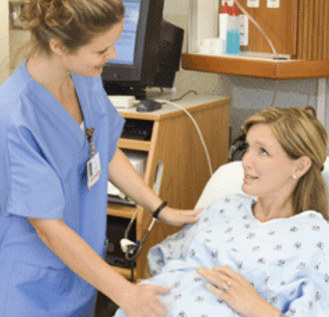You may be tempted to miss your prenatal care from time to time, but don’t. Attending every prenatal visit is essential to helping your care provider identify early warning signs of a serious pregnancy complication, preeclampsia.
At every visit screening tests are done to screen for preeclampsia that include weighing you and checking your blood pressure. This condition affects as many as 10% of all pregnancies, particularly from the 20th week on, and it can quickly become an emergency situation.
Preeclampsia occurs from a narrowing of your blood vessels. When this happens, you have can have decreased blood flow to your kidneys, brain, liver, retina, and placenta. It ranges from mild to severe and getting good prenatal care is the best way to identify this serious complication before it progresses.
Report any of the warning signs associated with preeclampsia immediately: a sharp, sudden headache, changes in your vision or abdominal pain, decreased fetal movement, nausea or vomiting and swelling in your face. While swelling is common in pregnancy, report any sudden or dramatic change in swelling in your face – bring a picture of what your face typically looks like to help your care provider see the difference.
Your care provider will diagnose preeclampsia with at least two blood pressure readings of 140/90 mmHg or higher and the presence of protein in your urine.
Managing preeclampsia
Preeclampsia occurs only in pregnancy and the postpartum period, and often the only way to end it is to deliver the baby and the placenta. Even then, you’re at risk for the associated seizures and hemorrhaging for up to 5 days postpartum.
If you’ve been diagnosed with preeclampsia, your healthcare provider should monitor you weekly for any changes in your condition. You may be asked to start monitoring your blood pressure and urine at home with self-testing and to regularly call the results in. You may need to go on “bed rest” at home, restrict your activity or take medication to help control your blood pressure.
If your case is more severe, you may be admitted to the hospital where you can be monitored more closely. Your healthcare team will work hard to prevent the seizures and complications associated with preeclampsia.
To identify preeclampsia, work with your healthcare provider to understand your unique risks factors, eat a healthy diet and be active during your pregnancy, and most importantly, keep all of your prenatal appointments.
What is your risk?
Your risk for preeclampsia during pregnancy increases if:
- You are younger than 19 or older than 35
- This is your first pregnancy
- You’ve had preeclampsia or eclampsia with a previous pregnancy
- You’re carrying more than one baby
- You have a family history of preeclampsia
- You have high blood pressure
- You have renal disease






Comments are closed.